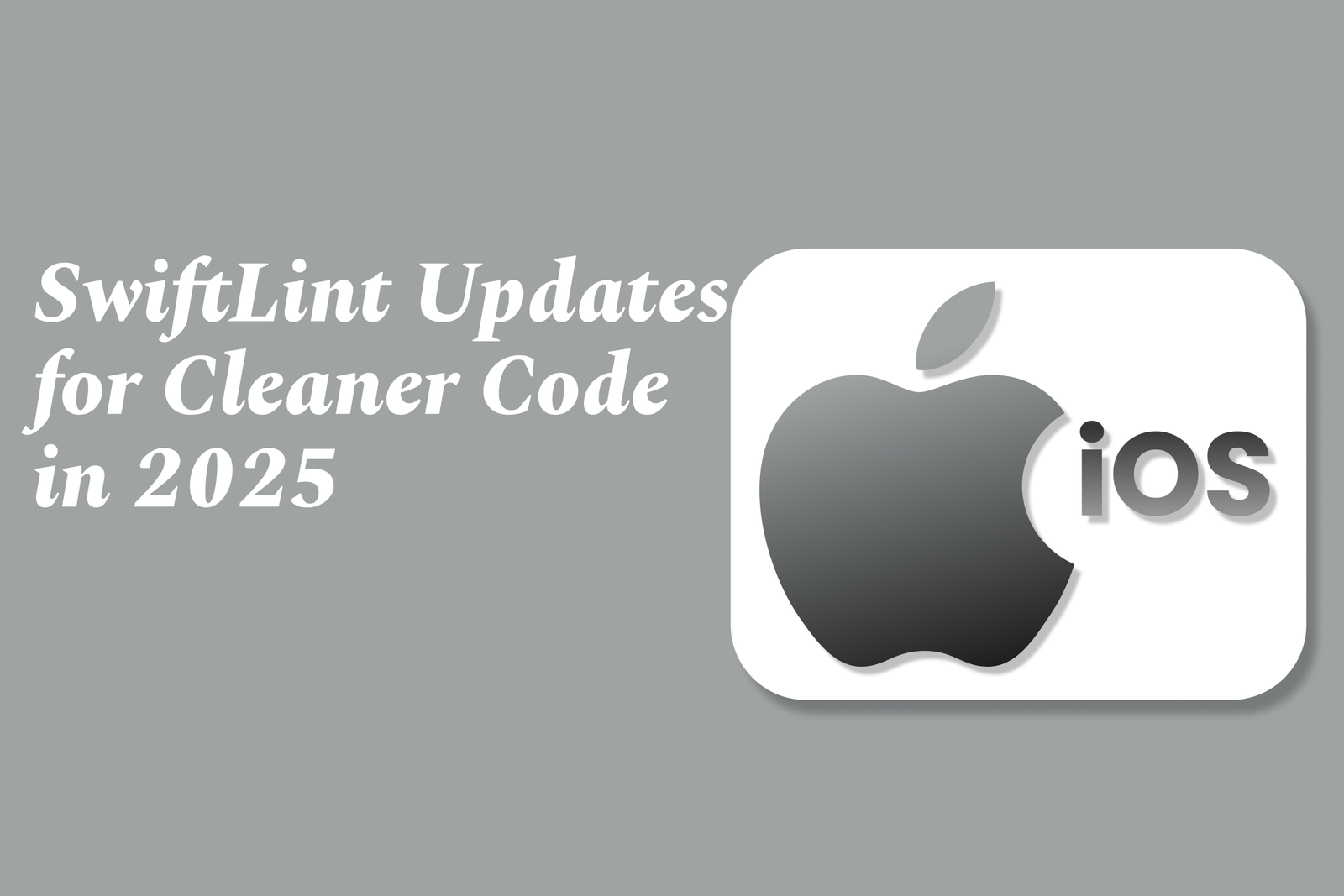SwiftLint Updates for Cleaner Code in 2025
SwiftLint updates in 2025 bring enhanced rules and customization options to enforce consistent, clean Swift code. These improvements help developers catch style issues early, streamline collaboration, and maintain readability, making Swift projects more robust and easier to manage.
SwiftLint Updates for Cleaner Code in 2025
1 ) Introduction to Code Consistency Challenges
Maintaining consistent code style in projects worked on by multiple developers is essential. Varied coding styles can complicate readability and future maintenance, much like layers of sediment in rock formations. Consistent coding styles help new developers understand and evolve the code without introducing bugs.
2 ) What is Linting?
Linting, a concept introduced by Stephen C. Johnson in 1978, involves using automated tools called linters to detect minor mistakes and style issues in code. This helps programmers focus on logic rather than formatting, providing standardized feedback akin to an IDE prompt rather than subjective human reviews.
3 ) Benefits of Using SwiftLint
SwiftLint is a popular open source tool for linting Swift code, integrated into Xcode build phases. It flags violations as warnings or errors—errors can even stop compilation, which is beneficial for continuous integration workflows like GitHub Actions. This reduces style related feedback in pull requests, streamlining collaboration and reducing interpersonal friction.
4 ) Configuring SwiftLint
SwiftLint is configurable via a YAML file, allowing teams to:
Disable default rules that don't fit their projects
Specify directories to include or exclude
Opt in to additional or experimental rules
Customize rule parameters, such as function or line length
Create custom rules tailored to specific project needs
5 ) Example of Rule Customization
Rules such as `function_body_length` can have thresholds for warnings and errors (e.g., warn at 120 characters, error at 200 ). This helps enforce readable, maintainable code structure.
6 ) Real World Application
Using SwiftLint encourages breaking down complex code into readable segments. For example, it warns against overly long lines such as bulky dictionary declarations for API requests, promoting cleaner, more maintainable code.
Conclusion
Adopting SwiftLint and configuring rules thoughtfully ensures code consistency, reduces bugs, and promotes a healthier, more collaborative development environment in 2025 and beyond.
https://justacademy.in/news-detail/android-new-api-releases
https://justacademy.in/news-detail/react-native-performance:-new-optimization-tips
https://justacademy.in/news-detail/apple-developer-program:-2025-changes-explained
https://justacademy.in/news-detail/xcode-cloud:-new-features-for-continuous-integration
https://justacademy.in/news-detail/how-react-native-is-powering-the-next-generation-of-desktop-apps
Related Posts
Java supports GDPR and data privacy by enabling secure data handling through encryption, controlled access, and precise data management. It allows developers to minimize PII exposure, ensure data confidentiality, and design workflows that comply with data protection regulations effectively.
Java code quality tools have evolved to include advanced static analysis, integrated security checks, and AI-powered code reviews. These updates help developers detect bugs, enforce coding standards, and enhance security, streamlining the development process and improving overall code reliability.
Java remains a cornerstone in big tech companies, evolving with modern features like records, pattern matching, and virtual threads. Its robust ecosystem, enhanced performance, and growing AI integrations keep it vital for both legacy systems and innovative new projects.
Java and CI/CD pipeline optimizations streamline Java application development by automating builds, tests, and deployments. They improve efficiency through parallelization, caching, and secure secrets management, enabling faster feedback loops and more reliable, scalable software delivery.
Java supports modern cryptography standards through its flexible Java Cryptography Architecture (JCA), enabling integration of advanced algorithms like AES, EdDSA, and post-quantum tools. Libraries like Bouncy Castle offer FIPS-certified, hardware-accelerated implementations for secure development.
Java 23 enhances record patterns by enabling concise, direct destructuring of record components within pattern matching, simplifying type checks and data extraction. This improvement boosts code readability and expressiveness by reducing boilerplate in handling immutable data classes.
Java remains a top choice for mobile app backends, powering scalable, secure, and high-performance server-side solutions. Latest trends include cloud-native microservices, reactive programming, and enhanced JVM optimizations, enabling efficient, flexible, and robust mobile backend development.
Java SE 24 and LTS Java SE 21 offer enhanced features and performance, while Apache Spark 4.0.0 introduces Scala 2.13 support and advanced ML and SQL capabilities. Together, they empower developers to build scalable, high-performance data applications with modern tools.
JUnit 5 modernizes Java testing with a modular architecture, improved assertions, and seamless Java 8+ support. Beyond JUnit, tools like Mockito and AssertJ enhance mocking and assertions, creating a powerful, flexible ecosystem for writing clean, efficient Java unit tests.
Java plays a pivotal role in cloud automation tools by providing a robust, platform-independent language used to build scalable automation frameworks like Jenkins and Selenium, enabling efficient CI/CD pipelines, testing, and orchestration across diverse cloud environments.










